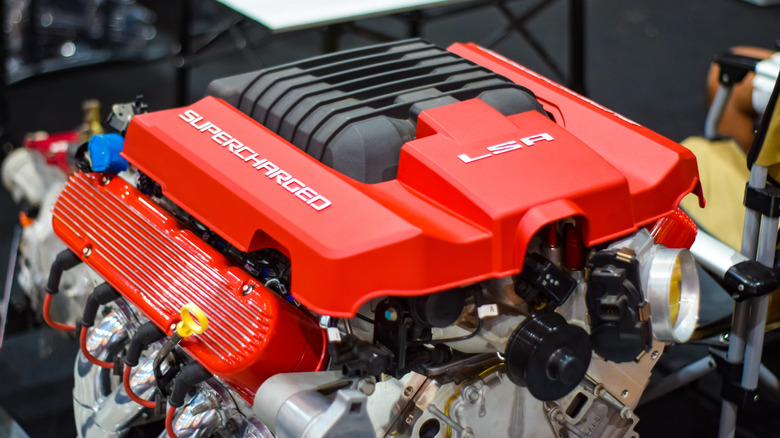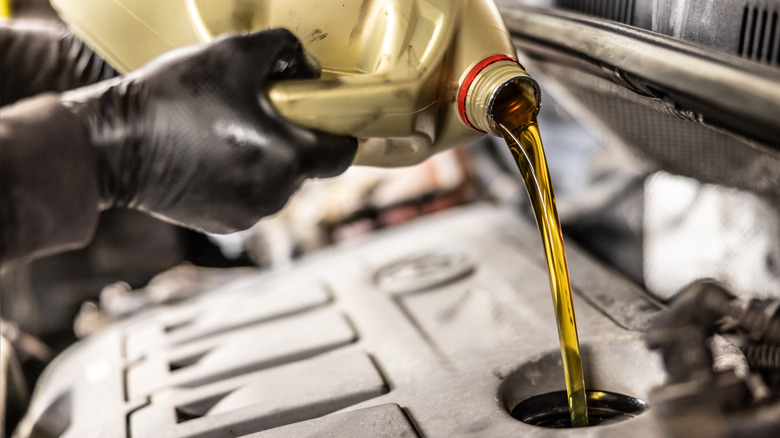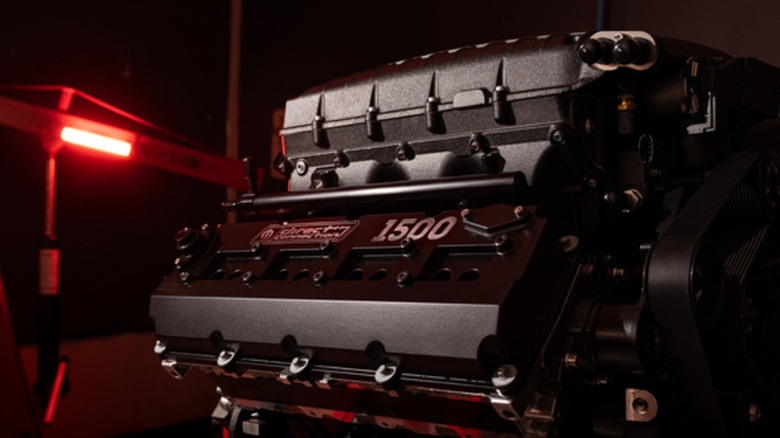What Does A Crate Engine Come With? Here's What A Package Typically Includes
Crate engines are hugely popular choices when it comes to replacing a failed or faulty engine in a vehicle, or for upgrading a standard engine in the pursuit of more performance. Put simply, a crate engine is a pre-assembled engine that's usually delivered in a crate. Some will be more complete than others, with options like turn-key crate engines being ready to just drop in and go, whereas other options require you to source extra ancillaries before they can be fitted and fired up, such as short- and long-block crate engines.
The number of items included in the package depends on which type of crate engine you buy. A turn-key crate engine will arrive as close to operational as is possible, which leaves very little left for you to source and fit. Typically, a turn-key crate engine will have spark plugs and associated engine sensors, in addition to everything you would typically receive with a long-block crate engine. This generally includes the engine block, crankshaft, and pistons (a short-block), plus cylinder heads, camshafts, and the valvetrain components.
Here's what else you might need when considering a crate engine
Short of delivering a mechanic and a workshop with the crate engine, there is only so much manufacturers can do in terms of providing you with everything necessary. Even the most comprehensive of turn-key crate engines — which might come equipped with spark plugs, a carburetor, and distributors — will be missing out on some basics. These might include filters, and most notably fluids – an engine full of coolant and oil being shipped across the country could get messy, after all.
In addition to serviceable items like these, you also need to have the tools necessary to remove the old engine, and then to fit the new one. An engine crane or similar will be your friend here, in addition to a smattering of other tools to fit the thing once you figure out how to move it around. There's also the small matter of electronics, which can be tricky to sort, especially when fitting a modern crate engine into a classic car. Some automakers, such as Ford, help you out here. For example, it sells Coyote engines with an engine control pack, which can make wiring in your crate engine a whole lot easier.
Here's why a short- or long-block engine might suit you better
If you're thinking about a crate engine, then the turn-key option might immediately be jumping out as the best option. But hold on. A short- or long-block might actually be the better option. Sure, they are less complete than a turn-key engine, but if you plan on modifying the engine for more power in the long run, then this could actually be a blessing.
While turn-key crate engines could come complete with carburetors and spark plugs, you might prefer to source specific performance parts yourself. Paying for a turn-key engine which includes parts you would want to swap out seems a little pointless. The same is true for long-block engines if you plan on sourcing specific valvetrain components and heads — a short-block will suit you just fine. One of the differences between short- and long-block engines versus turn-key crate engines is that the former will often prove to be the more economical choice, allowing you to reuse some old components. If saving some money is high up on your priorities when considering a crate engine swap, then avoiding the turn-key option could be best.


